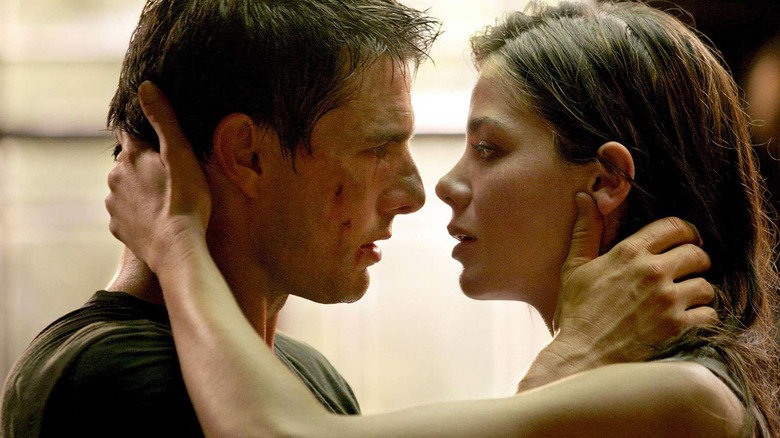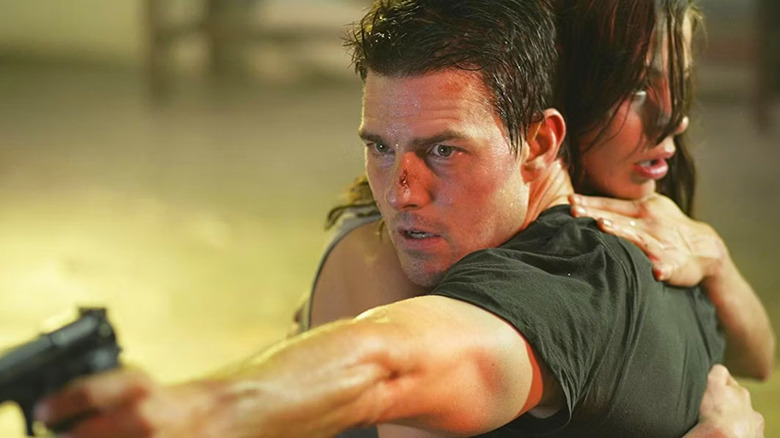J.J. Abrams Wanted To Answer This Question With Mission: Impossible III
Tom Cruise may be faithfully committed to churning out those "Mission: Impossible" films for the rest of his natural life, but a long time ago — about 15 years, to be exact — this particular cinematic universe wasn't so much of a sure thing. While Brian De Palma's "Mission: Impossible" and its sequel, helmed by John Woo, were successful in their different ways, both were self-contained stories with little connective tissue. Creative differences aside, both featured Cruise's Ethan Hunt as a one-man stunt show — and that was pretty in line with the gonzo expectations of the era.
But as Hollywood moved out of the aughts, action movies began to demand a bit more from their stars. A tolerance for pain and a thirst for adrenaline had to make room for real pathos, and while J.J. Abrams — who made his feature debut with "Mission: Impossible III" — would dial the action of the "M:I" franchise to unspeakably chaotic levels, he also wanted to explore a question that his predecessors had left unanswered.
'How do you do what Ethan Hunt does and actually exist as a real person?'
Like a lot of action auteurs, Abrams obviously had a huge respect for the "Mission: Impossible" films that came before. But there was one thing missing that he hoped to address in his own. "The first two movies, you know, were so much about Ethan as a spy, but not as much concerned with Ethan as a man," Abrams said in 2005 behind-the-scenes featurette. "And so my question was, how do you do what Ethan Hunt does and actually exist as a real person?"
With "Mission: Impossible III," Abrams wanted to evolve the films past the traditional spy story, focusing instead on "a man who is a spy." He began by taking Ethan out of the spy game altogether, dropping him into suburbia and matching him up with a mild-mannered civilian who has no idea about his real profession. When he's called back into the field for one last mission, it throws his double life in jeopardy — and puts his fiancee, Julia (Michelle Monaghan) in harm's way too.
That conflict sounds relatively simple on paper, but Abrams and Cruise were really going for a back-to-basics approach to "Mission: Impossible III" — and with the former's grasp on bonkers action and the latter's dedication to his stuntwork, it makes the film one of the strongest installments of the "Mission: Impossible" series to date. It helped that the chemistry between Cruise and Monaghan massively sold their strained romance. Though said romance was short-lived, it helped to humanize Ethan when necessary, and set a precedent that the films that followed have had to match in kind.

